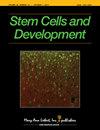MicroRNA-7a2是垂体干细胞发育所必需的。
IF 2
3区 医学
Q3 CELL & TISSUE ENGINEERING
引用次数: 3
摘要
垂体内有SOX2+干细胞亚群。然而,垂体干细胞发育的调控机制仍知之甚少。在这里,我们证明了微小RNA-7a(miR-7a)在发育中的垂体中富集,并在垂体干细胞中时空表达。小鼠miR-7a2的组成性缺失导致出生时出现垂体发育不良,主要表现为畸形的前叶。使用免疫荧光、免疫组织化学或原位杂交,我们观察到,尽管促性腺激素的末端分化受到抑制,但出生时miR-7a2缺失后,激素表达细胞的规格没有受到阻碍。对miR-7a2敲除小鼠的新生儿和成人垂体的进一步研究揭示了SOX2+垂体干细胞区室的扩张。上皮-间充质样转变的抑制似乎是这种表型的原因,而不是异常增殖或凋亡。此外,我们的数据表明,Gli3和Ckap4是垂体干细胞中miR-7a的潜在靶点。总之,我们的研究结果表明miR-7a2是参与垂体干细胞发育的关键因素。本文章由计算机程序翻译,如有差异,请以英文原文为准。
MicroRNA-7a2 is required for the development of pituitary stem cells.
The pituitary gland is inhabited by a subpopulation of SOX2+ stem cells. However, the regulatory mechanisms underlying pituitary stem cell development remain poorly understood. Here, we demonstrate that microRNA-7a (miR-7a) is enriched in the developing pituitary and is spatiotemporally expressed in the pituitary stem cells. Constitutive deletion of miR-7a2 in mice results in pituitary dysplasia emerging during birth, which is primarily manifested as malformed anterior lobes. Using immunofluorescence, immunohistochemistry or in situ hybridization, we observe that the specification of hormone-expressing cells is not impeded post miR-7a2 deletion at birth, although the terminal differentiation of gonadotropes is inhibited. Further investigation of neonatal and adult pituitaries in miR-7a2 knockout mice reveals an expansion of the SOX2+ pituitary stem cell compartment. The inhibition of epithelial-mesenchymal like transition seems to be responsible for this phenotype, rather than abnormal proliferation or apoptosis. Furthermore, our data suggest that Gli3 and Ckap4 are potential targets of miR-7a in pituitary stem cells. In summary, our results identify miR-7a2 as a crucial factor involved in pituitary stem cell development.
求助全文
通过发布文献求助,成功后即可免费获取论文全文。
去求助
来源期刊

Stem cells and development
医学-细胞与组织工程
CiteScore
7.80
自引率
2.50%
发文量
69
审稿时长
3 months
期刊介绍:
Stem Cells and Development is globally recognized as the trusted source for critical, even controversial coverage of emerging hypotheses and novel findings. With a focus on stem cells of all tissue types and their potential therapeutic applications, the Journal provides clinical, basic, and translational scientists with cutting-edge research and findings.
Stem Cells and Development coverage includes:
Embryogenesis and adult counterparts of this process
Physical processes linking stem cells, primary cell function, and structural development
Hypotheses exploring the relationship between genotype and phenotype
Development of vasculature, CNS, and other germ layer development and defects
Pluripotentiality of embryonic and somatic stem cells
The role of genetic and epigenetic factors in development
 求助内容:
求助内容: 应助结果提醒方式:
应助结果提醒方式:


